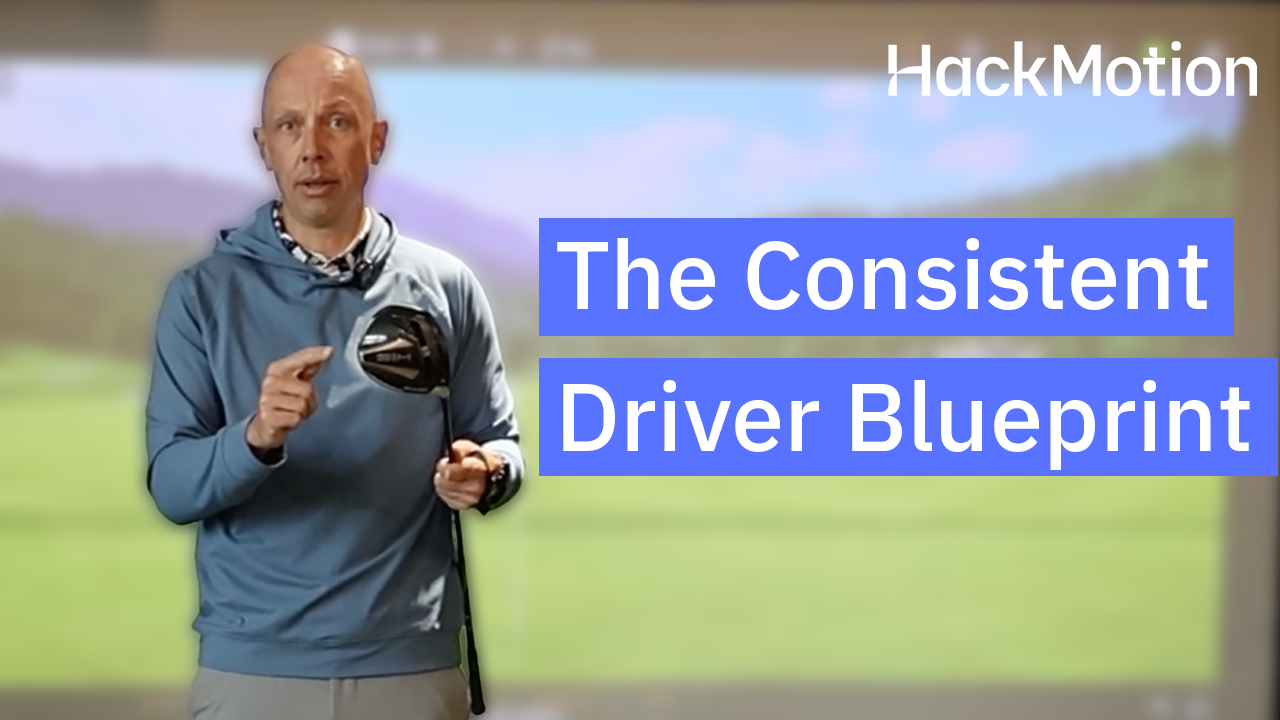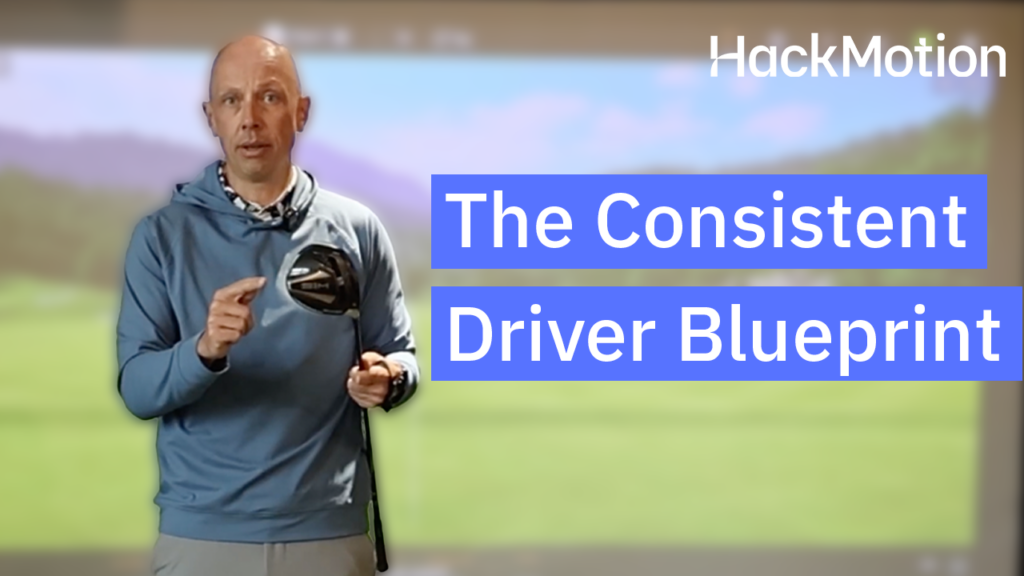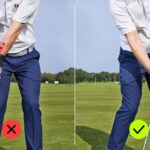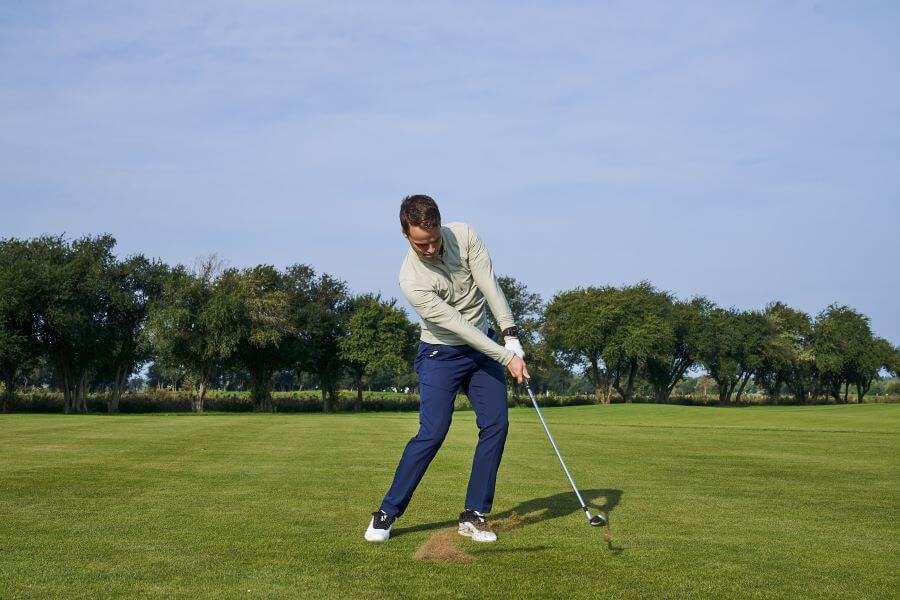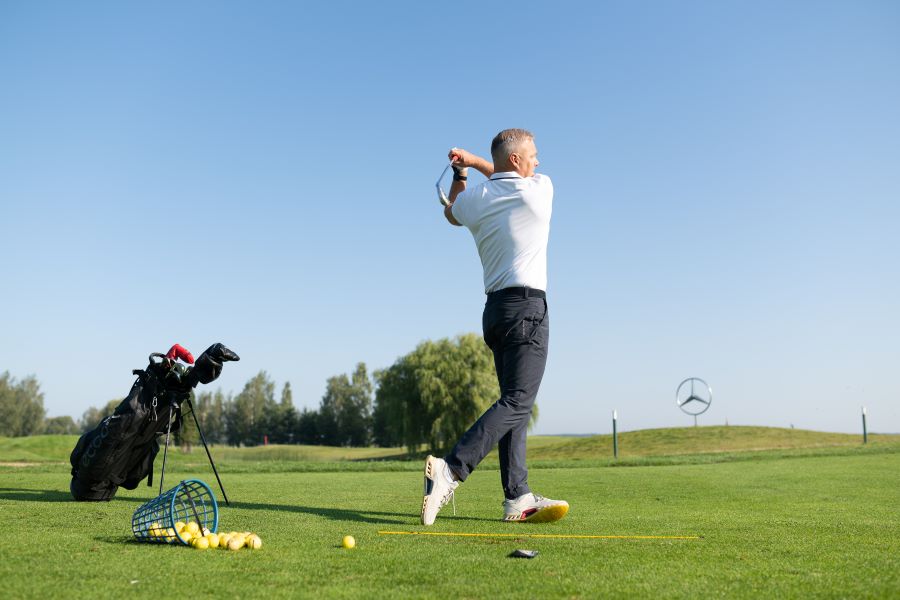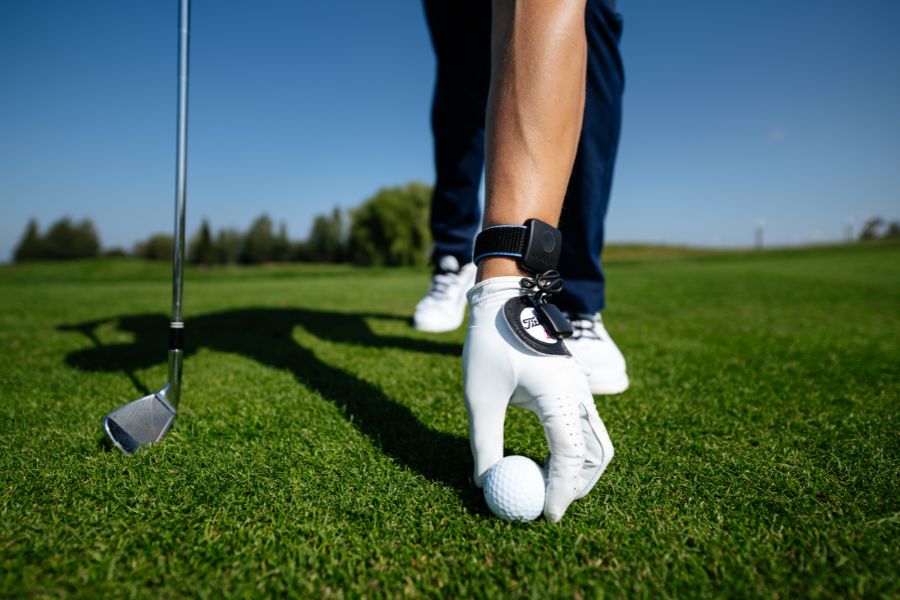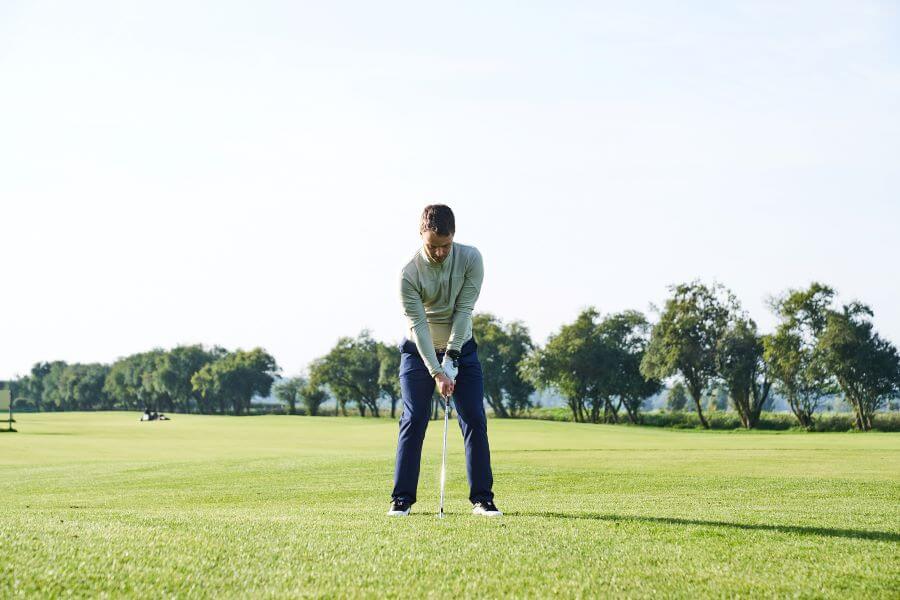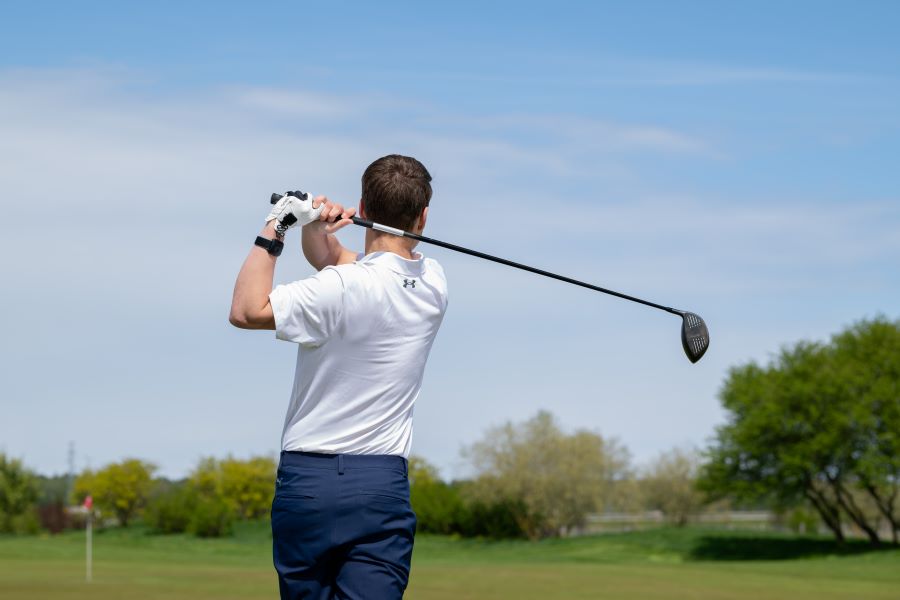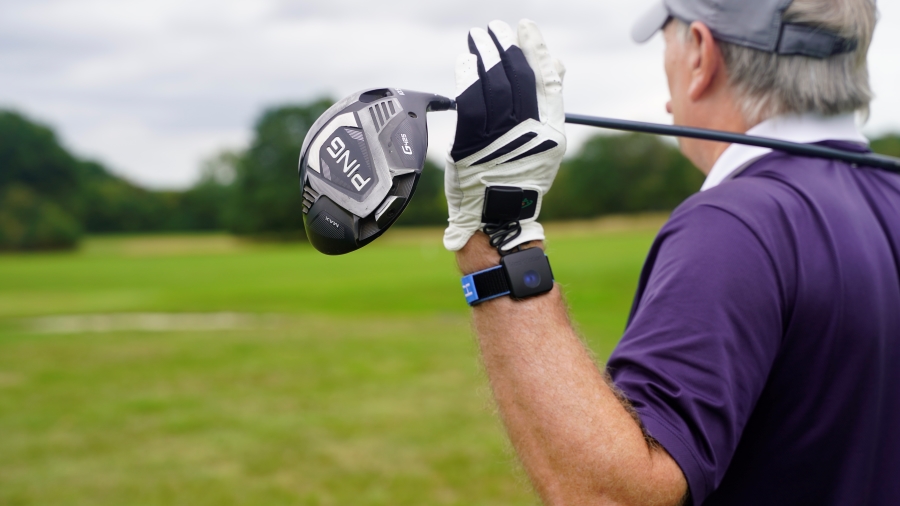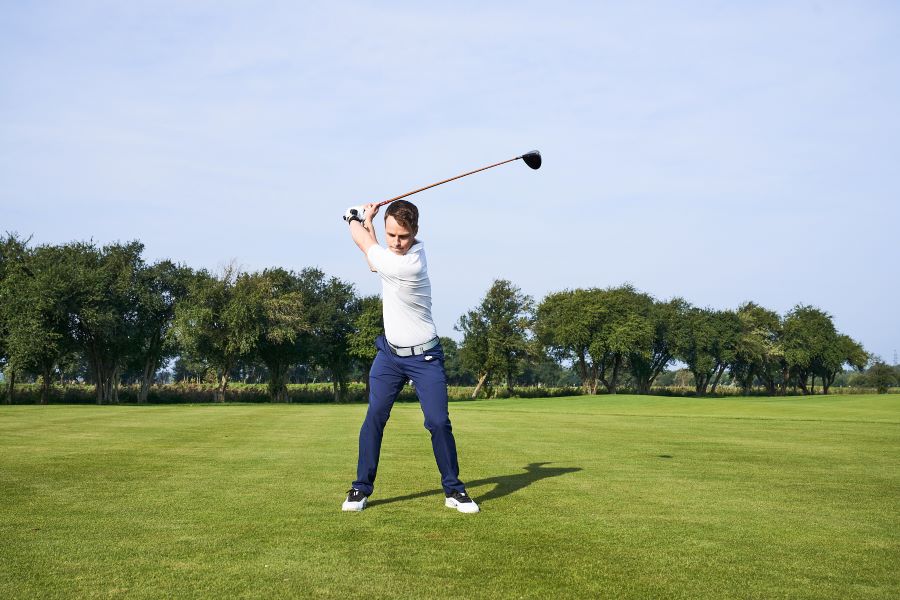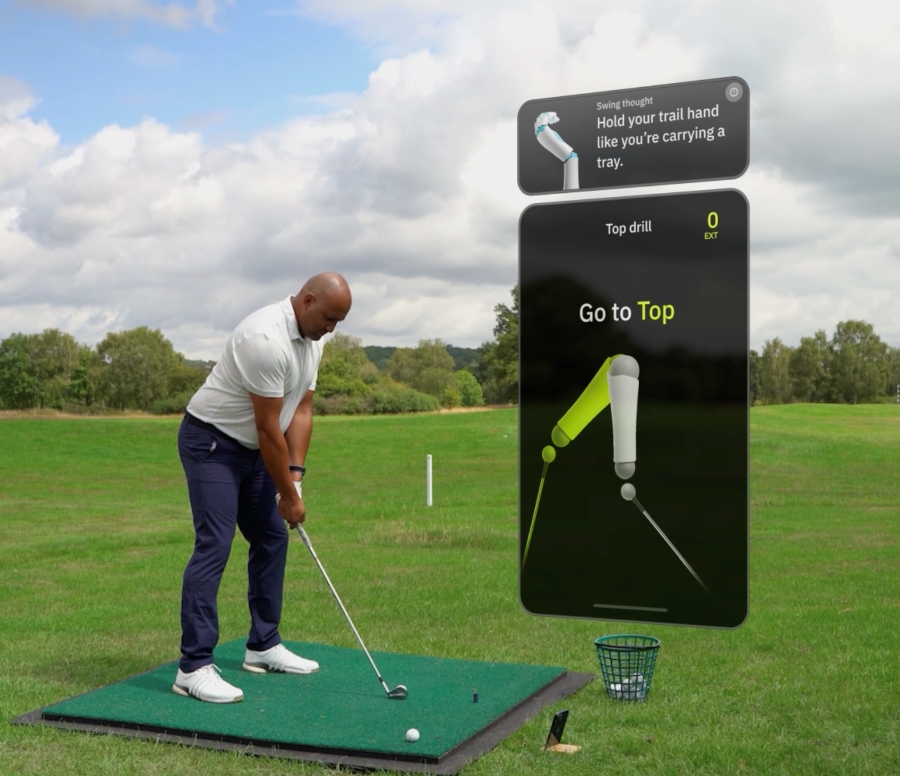How to Hit the Golf Ball Higher with Driver and Irons (Actionable Tips & Drills)
Learning how to hit your golf ball higher enables you to clear towering trees, ride the tailwind, and promote soft landings.
This is a step-by-step process to hit your driver and irons higher, boosting your carry distance off the tee and on approach.
After reading about the best way to hit higher golf shots, you’ll learn the importance of weaker lofted clubs and a low shaft kick point. Additionally, drills are provided that address the driver and irons separately, offering a detailed system to help you achieve results quickly.
How to Hit a Golf Ball Higher (Key Takeaways)
Review these brief but critical key points before getting into the details. They will give you a broad overview of this topic so you can fully understand the differences between hitting your driver high and your irons high.
- Play higher lofted clubs to leverage the launch assistance.
- Swing a low kick point shaft to generate a higher launch.
- Place the ball further forward than usual to shallow the golf shaft on the downswing.
- Use wrist flexion to shallow the shaft into impact.
- Accelerate through impact to finish with high hands and elevated ball flight.
Contents
How to Hit the Golf Ball Higher with Driver
Launching your driver is the delicate act of getting more height without losing distance.
Hitting it high doesn’t always mean hitting it far, so be sure to study the tips below and perform the drills exactly as instructed to optimize your drives for height and distance.
Tilt Your Shoulder at Address
The penultimate part of your setup to hit a golf ball higher with a driver is tilting your lead shoulder at address. Tilt your shoulders slightly back at address, keeping them parallel to the target line.
Leaning your shoulders gives you the sensation you want to achieve at contact as you accelerate on your upswing. At impact, your lead shoulder should rest higher than the trail shoulder while remaining aligned with the target.
Ultimately, tilting your shoulders at address is designed to encourage an upwards strike after the low point of the swing.
Flex Wrists on the Downswing
After religiously employing the HackMotion sensor during training, you’ll find that wrist flexion on the downswing is essential for optimal height.
Flexing or cupping your wrists on the downswing at the proper driver checkpoint helps shallow your shaft and marginally close the clubface to avoid slicing or pushing your shot as well.
For context, if you hold your hand out in front of you with the palm facing the floor and push your fingers down, you’ve flexed your wrist. From this position, turn your hand around so your palm faces the target.
Notice how your palm is closed to the target, which, along with shallowing the shaft, is how wrist flexion maintains proper loft on the driver.
Strike the Ball After the Swing Low Point
Since your ball is teed up for a drive, you have to strike it on the up to help it off the peg and into the sky.
If you hit the ball with a descending blow, the chances are that you will generate inadequate speed and energy transfer at impact, resulting in a shallow and weak launch.
The best ball strikers on the planet can launch the ball high and long when hitting down on it. However, most of us cannot generate Bryson DeChambeau club head speed and instead need lift assistance for consistent launch, flight, and carry distance.
Drill to Try
Place a tee 3 to 5 inches behind your golf ball, and your head cover 5 inches ahead of the impact zone.
The tee acts as the marker for the low point of the swing. Anything before that will cause your driver to plough into the turf and lose clubhead speed.
Conversely, if you strike the ball like an iron shot before my club bottoms out, you’ll hit the head cover ahead of the ball.
Optimize Your Equipment
A flexible shaft with a low kick point could be a quick fix to hit the driver higher. Golf shafts are built to deliver superior flex into impact, which improves energy transfer for a clean strike, low spin, rapid pace, and a lofty launch.
The higher the kick point on a shaft, the lower you’re likely to launch your golf ball. Low kick points can feature on stiff, moderate, and super flexible shafts.
Drills to Hit Your Driver Higher
These are the only drills you need to hit your driver higher and keep the distance. You want to train your body to make these minor adjustments to keep your spin rate low but increase your driver launch angle.
Tee Under Arms Drill
The arms need to work in sequence with the body, but if they start lifting on their own, it becomes difficult to time impact and hit high drives.
The Tee Under Arms Drill will help you get your backswing and downswing on plane and stay more connected. If you are a player who swings over the top often, the Tee Under Arms drill should get the swing back on plane.
If you don’t want to use a tee, a glove or a towel will work.
- Video Timestamp: 9:00 – 11:30
Tee Under Arms Drill – Step by Step
- Place a golf tee, glove, or towel under both arms.
- Make swings while keeping the objects in place through the backswing and downswing.
- Helps prevent excessive arm lift and encourages a more connected, rotational swing.
Skipping Stone Body Rotation Drill
The Skipping Stone drill encourages proper sequencing between the body and arms, and helps prevent an early release with the wrists, otherwise known as casting.
If you struggle with inconsistent contact or feel like you can’t get your timing quite right, this body rotation drill will help.
- Video Timestamp: 3:45 – 4:46
Skipping Stone Body Rotation Drill – Step by Step
- Imagine skipping a stone across water.
- Rotate your body and keep your arms relaxed, allowing them to extend late.
- Focus on maintaining side bend and rotation for a shallow, stable path.
- The drill helps to promote optimal launch and increase carry distance.
Twist the Wrists Drill
Most golfers don’t realize how much their wrists twist in the backswing – and how critical that is for controlling face angle at impact.
This drill teaches you to consciously adjust the twist to fix slices or hooks.
Twist the Wrists Drill – Step by Step
- Take the club back to waist height (P2) and pause — the face should point slightly down.
- Feel the face more open at P2 (less twist) to reduce closure.
- Hit shots while experimenting with twist amounts and observe the ball flight.
- Use HackMotion feedback: Most pros move from extension at setup and flatter at the top, then flexion at impact.
How to Hit the Golf Ball Higher with Irons
Hitting your irons higher requires a different approach than with your driver.
With tee shots, you have the added advantage of a tee, whereas with irons, you must learn to be more precise with your angle of attack, wrist release, and ball position.
Maintain Wrist Flexion Through Impact
Increasing your ball speed is crucial for getting your ball into the air, which is achieved through greater compression. Wrist flexion helps you control the club to increase compression at impact.
Flexing delofts the clubface, keeping it slightly closed, which is the best angle to help you hit the ball straighter.
Hitting pure iron shots is challenging when you extend your wrists in the swing, as many amateurs do. This opens up the clubface, risking sliced shots or inconsistent contact, due to a smaller sweet spot on the iron clubface.
Nail Down the Ball Position
Ball position is one of the more overlooked areas of the setup for amateur players. The ball position has a big impact on the height and trajectory of your iron shots.
If your irons are too far back in your stance, when you get to the ball, you may hit behind it, and the clubface could be open, as it didn’t have time to close.
If your irons are too far forward in your stance, you may hit them thin, lose power, or even hook them to the left.
The ball position will change from your short irons to your long irons.
- Expect to place the 8 and 7 irons in the direct center of your stance.
- The 4, 5, and 6 irons can move a ball width forward of center, still staying behind the lead heel.
- For the 9 iron and wedges, move the ball one-half golf ball width back from the center.
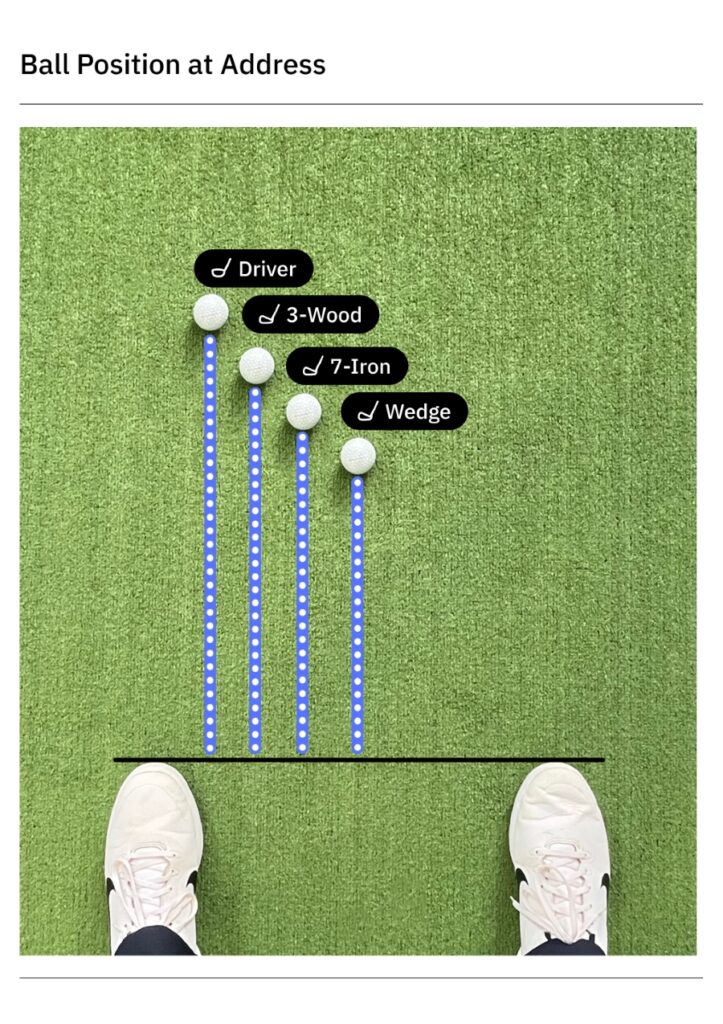
The adjustments are minor, but they matter. Once you find that perfect ball position, just work on getting consistent with it.
Understand Your Trail Arm Mechanics
Misusing the trail arm is one of the most common mistakes recreational players make.
While it’s easy to focus on the lead wrist and lead arm position, sometimes switching to a trail arm focus can be the game-changer.
The first step in this process is to learn what we call position three. Position three is when your trailing elbow is externally rotated and tucked in front of your body at setup.
This is often referred to as the “giving blood” position. If you can have your trail elbow in this position while maintaining the trail wrist and forearm in a flexed position, you’ll have an easier time keeping the clubface square.
Most importantly, from this position, it’s hard to cast or flip through impact.
Drills to Hit Your Irons Higher
Try to do these drills on a real grass practice tee. Of course, any practice is good practice, but sometimes practicing on a mat gives you false feedback, whereas the turf never lies.
Towel Compression Drill
Optimizing your attack angle should be the first priority. Not only will it help with hitting the ball higher, but it will also improve your consistency and accuracy.
You can work on multiple facets of your game with this drill, and if you’re wearing your Hackmotion, the learning process will be even quicker.
You can compound drills and use the information provided by the advanced Hackmotion sensors to hit your irons higher, straighter, and crisply much more often.
- Video Timestamp: 7:29 – 9:22
Towel Compression Drill – Step by Step
- Lay a small golf towel down about a grip length away from your ball.
- Take your shots as you usually would while being mindful not to hit the towel on the downswing.
- Your divots should be after the ball as well.
- If this gets too easy, then move the towel closer to the ball.
Motorcycle Drill
One of the best drills for improving wrist action in the golf swing is the HackMotion Motorcycle Drill.
This drill teaches you how to properly twist the grip (like turning a motorcycle throttle “off”) to get the lead wrist bowed (flexed) instead of cupped (extended).
This helps square the face earlier in transition and delivers more shaft lean at impact to launch the ball at a higher angle.
Motorcycle Drill – Step by Step
- Take your standard setup.
- Pause at the top and check your wrist extension data if you’re using HackMotion—many high-handicappers over-extend here.
- On the downswing, rotate your lead wrist toward flexion as needed to open or square the club face.
- Practice pumping from the top down to hip level (shaft parallel to the ground) with that “motorcycle” feel.
- If you over-flex, you might close the face too much. If you slice, add a bit more “motorcycle” move to fine-tune the ball flight.
- The HackMotion Motorcycle Drill is located in the drill section of the HackMotion app. Practice in real time to track your progress.
HackMotion Release Drill
If you have trouble getting your hands forward at impact, this short-swing release drill from HackMotion can be a game-changer.
It’s designed to ingrain a better hand path from club-parallel through impact and into a short follow-through.
If you can’t get your wrist action correct from waist high to waist high, you can’t do it in the full swing, and you will start seeing higher iron shots very quickly.
Perfect Your Release with HackMotion
Fine-tune your release for consistent contact. Start with a short swing to master control before adding power.
HackMotion Release Drill – Step by Step
- Address the ball like you’ll swing only from waist-high down to waist-high.
- Swing from 9 o’clock to 3 o’clock and focus on taking small swings to keep the wrist ahead of the clubhead.
- HackMotion will show if your lead wrist is still too extended or your trail wrist isn’t maintaining enough bend. Stay “in range.”
- Once you can deliver a perfect release in slow motion, gradually add more power and length to the swing.
- If your data starts creeping out of range (showing a flip or cast), slow back down until you master the release again.
Final Thoughts
Remember to use weaker lofted clubs, flexible shafts with a low kick point, and a neutral grip. Plus, always accelerate through impact to boost power, lag, and promote finishing with high hands.
Finally, although multiple steps are involved in hitting higher golf shots, wrist flexion is vital for shallowing the shaft and closing the clubface on the downswing.
Operating with the incorrect level of wrist flexion on the downswing impacts your clubface angle and your ball flight.
The HackMotion golf wrist sensor trains you to induce the ideal flexion and extension during your swing for improved clubface control, power, and accuracy. Learn how it can unlock your ability to hit towering iron and tee shots.
